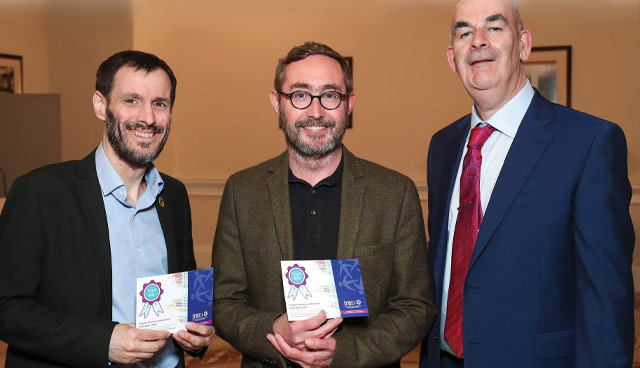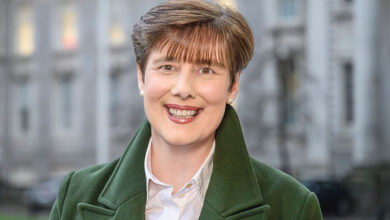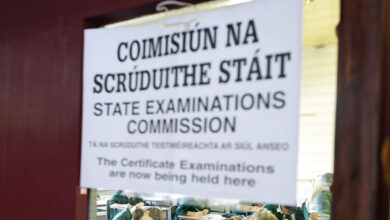The road to parity

April 2019 saw the Irish National Teachers’ Organisation (INTO) proclaim their members to be in sight of achieving their long sought-after goal of pay parity. Secretary General John Boyle talks to Odrán Waldron about just how close parity is and the importance of that parity in an Ireland that has never been more expensive to live in.
“Back in 2011/12, two different governments unilaterally imposed cuts on new entrants to the public service. We would contend that teachers were targeted at that time for harsher treatment than other public servants,” Boyle says, beginning from the start of the fight that has defined the 2010s for teachers’ unions in Ireland such as his own and the Association of Secondary Teachers in Ireland.
Teacher pay was cut by 10 per cent by the Fianna Fáil Government at the advent of the economic crash, with the subsequent Fine Gael and Labour Government stripping teachers of their degree allowances, which amounted to €5,000 per annum for teachers with master’s degrees. Credit given for the length of time spent training in universities or colleges was also done away with; having started at the second or third rung of the pay scale depending on the length of their training, all new teachers were put back to the first point of the scale. When the INTO released its statement claiming that parity was on the way, it did so because the Department of Public Expenditure and Reform had, for the first time, used the word “resolve” when discussing the pay agreements of the future, hinting at an end to and a making up for these kinds of measures.
“In the intervening years, through negotiations, protests and lobbying, we have reduced the differential that was expected,” Boyle says. “The differential was expected to be €356,000 per teacher over their 40-year career. Last Easter, when we made that statement, a graduate teacher straight out of college from 2015 on into the future will have no differential going forwards. That €356,000 anticipated loss is back to zero, so they have pay parity in our definition. The teachers who came out from 2011–14 still face future losses.”
“Government officials said that they would work towards a resolution of this issue for certain unions, meaning education unions. That’s the first time we got the word resolution used. They gave choices in the statement that it would be worked towards in a review of public service pay or the talks for the next pay agreement.
“Since then, discussions have been happening about public service pay; they’re not finalised, they nearly are but they haven’t been signed off. I don’t know whether that review is going to start or if we’re going to have to wait until the start of the pay agreement talks in May or June 2020. Either way, we have a written commitment from the Department that the parties will work towards resolution.”
The Public Services Stability Agreement, which dictates the pay of teachers currently, “was not designed to give pay rises to teachers or public servants”, Boyle says. Calling it the third deal of its kind, he paints the picture of a “gun put to the head of the public service unions” in 2013, when they were told to negotiate with the Government or face unilateral cuts across the board. In the time of the cuts imposed on public service workers, Ireland’s cost of living has skyrocketed. September 2019’s pay restoration of 1.75 per cent failed to keep pace with rent inflation around the country, with the regions of Dublin experiencing year-on-year rent rises in the areas between 3.1 and 5.9 per cent for quarter three of 2019. Fórsa, the country’s largest public services trade union has also warned of a “nightmare scenario” as private sector pay rises continue to streak ahead of public ones.
“It’s a huge worry for us that we’re not going to be returned to our previous pay levels until 1 October 2020. At the moment, the teacher unions will get a 2 per cent restoration, the final restoration of their scales,” Boyle says. “The people who were hit the third time, their allowances were cut and those are also being restored in September. For teachers who are trying to get on the housing ladder or just simply exist in the cities, they’re on an incremental scale and will get an incremental rise most years. New entrants get to skip increments, and their upcoming restoration ranges between €5,000–€6,000. For us, as long as there is one teacher in a staff room not being treated equally with their colleagues, we will be battling for pay equality.”
“Now that things have turned on their head and there’s no affordable housing in Dublin City in particular, but in some other areas too, the restoration of teacher pay in itself would not be enough. There are still significant numbers of teachers, particularly those who are single, who cannot afford rent in plenty of parts of Ireland, nor can they afford to get onto the housing ladder.”
Teacher pay scales currently have 25 pay points, ranging from €35,088 per annum to €64,302. The national listed average price for property in quarter three of 2019 was €257,000; with mortgages typically given at three/three-and-a-half times annual salary, a single teacher on pay point 25 could not mortgage the average list price in Ireland, while a couple of teachers would require both to be on pay point eight (€44,873) to afford the minimum. This is a problem Boyle is all too aware of: “Now that things have turned on their head and there’s no affordable housing in Dublin City in particular, but in some other areas too, the restoration of teacher pay in itself would not be enough. There are still significant numbers of teachers, particularly those who are single, who cannot afford rent in plenty of parts of Ireland, nor can they afford to get onto the housing ladder.
“The Government has got to address that in a number of ways and that includes paying people properly. We have the best teachers in the world; the Salisbury Report said that we have either the highest or nearly the highest quality of entrants to teaching, our scores in primary school children reading are among the best in the world, no country outperformed Ireland in the recent PIRLS tests. We have a very high quality education system and the concern is that if we don’t address the pay disparity, housing prices and the lack of a promotional system in teaching, then we will lose that.”
The idea of a Dublin-based allowance system similar to London’s is put to him, “we take the lead from our membership” he says, but notes that the hypothetical couple both on pay point eight of the salary scale would require almost doubling of their salaries in allowances to afford a property in the capital city. He then turns back to the Government’s promise for resolution to the pay parity issue: “We’re now eight months on from the promise that Government made that they would review public service pay. In December, we’re going to have big decisions to make if Government don’t agree to review the payment and we’re left waiting 10 more months to get our last restoration and our new entrants are left again.
“We would have to consider our options if Government breaks those commitments or, indeed, if another government comes in and doesn’t stick to those commitments. There will be a lot of noise made by public service unions because we are eight years into pay inequality, 12 years waiting for equality for principals and deputies. There are lots of other public service workers who can’t afford to live in this country anymore. There’s going to have to be some action in relation to these issues if Government don’t stick to the commitments made last Easter,” he concludes.





